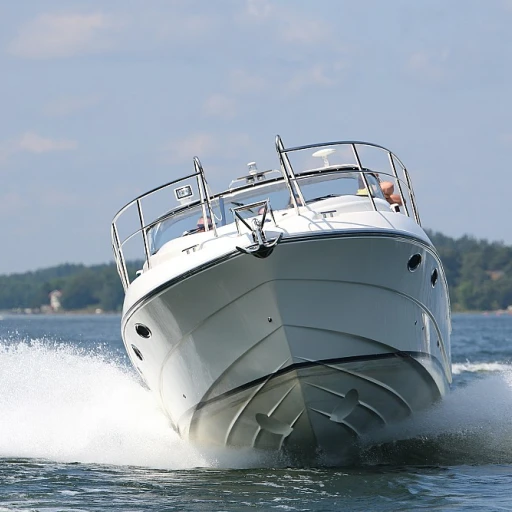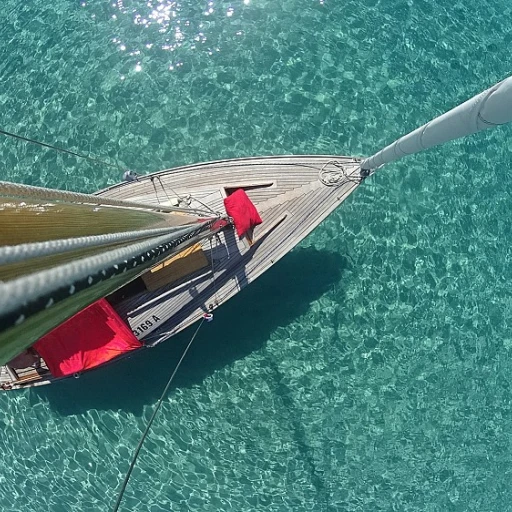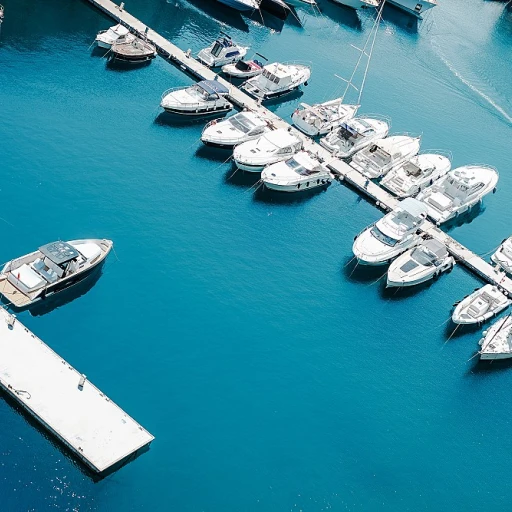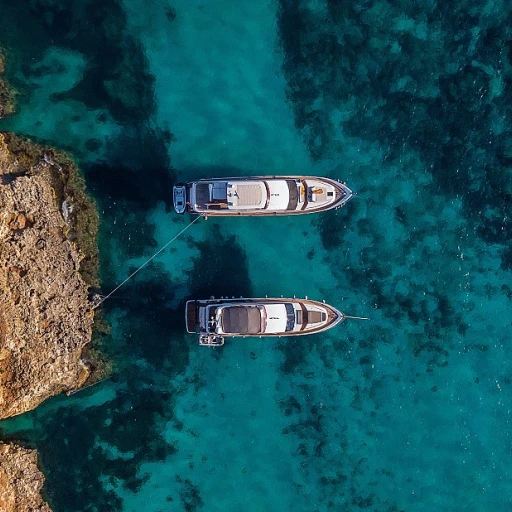The Rise of Solar Energy in Sailing
Embracing Solar Power: A New Era for Sailors
The integration of solar power in the marine industry is gaining momentum as sailors increasingly prioritize sustainability on the open seas. The adoption of solar panels on sailboats not only minimizes the reliance on traditional marine power systems but also significantly reduces the carbon footprint associated with sailing. Coupled with advances in technology, solar power provides an eco-friendly and cost-efficient alternative, attracting an ever-growing community of environmentally-conscious sailors.
Recent advancements in solar technology have made solar panels more efficient and versatile than ever before. Flexible solar solutions and semi-rigid designs now cater specifically to the dynamic environment of a sailboat, offering both functionality and adaptability. This progression is facilitated by the development of high-grade efficient cells and durable materials that withstand harsh marine conditions, ensuring that boats harness the maximum power from the sun to operate their systems.
Moreover, compared to their original price, the current price trend of solar setups is observing a decline, making it more accessible for private boat owners to make the switch. The investment in a solar system can lead to significant savings on fuel and maintenance costs over time, supporting sustainability while remaining economical.
For sailors, harnessing solar power represents not just an environmental choice but an opportunity to embrace technological advancement and innovation on their journeys. This evolving trend reflects a commitment to sustainable voyages, keeping stride with a world increasingly aware of its ecological responsibilities.
Choosing the Right Solar Panels for Your Sailboat
Selecting the Perfect Solar Array for Your Sailing Needs
When transitioning to solar power, ensuring that you have the appropriate solar panels for your sailboat is paramount. The variety of options available can be overwhelming, yet it's crucial to focus on the specific needs of your boat.
Initially, you'll have to decide between rigid and flexible solar panels. Rigid solar panels are typically constructed with higher-grade materials making them more efficient in energy conversion, yet they often come at a higher original price. In contrast, flexible solar panels are more adaptable to the contours of your deck, allowing for easier installation, but may offer slightly less efficiency in converting the sun's rays into usable power.
Marine solar panels also come in various wattages - from compact 100-watt panels to systems offering several hundred watts. When determining the optimal wattage for your vessel, consider how many amp hours you wish your batteries to store and your daily power consumption. For instance, higher watt flexible and semi rigid solutions can accommodate greater power demand.
Engaging in a cost comparison between the current price per watt for both rigid and flexible options can also aid in making an informed decision, particularly when balanced against your investment return over time.
Moreover, efficient cells made by manufacturers such as SunPower could be a worthwhile consideration despite the potential increase in the add to cart price. Integrating advanced technology like lithium batteries can further enhance your solar system's capacity, offering prolonged watt hours and overall system robustness.
When planning your investment, refer to sustainable sailing practices to inform your choices, promoting both eco-consciousness and innovation.
Installation Challenges and Solutions
Installation Challenges and Innovative Solutions
Integrating solar power systems onto a sailboat isn't without its hurdles, but with the right planning, these challenges can be effectively managed. Here's a closer look at some common issues you might face and viable solutions to ensure your marine solar system operates efficiently. Space Constraints: Sailboats often have limited deck space, making it essential to wisely select the right type of solar panels. Flexible solar panels can be a fantastic option due to their adaptability and lightweight nature. They can contour to curved surfaces without compromising marine-grade efficiency. Mounting Options: The choice between rigid solar panels and semi-rigid ones depends largely on your boat's design and usage needs. While rigid panels are more durable and generally offer higher power output, semi-rigid panels provide a balance between flexibility and performance. Wiring Complexities: Implementing the correct wiring setup is crucial for maximizing your solar kit's output. Utilize efficient solar cells to optimize watt hours produced. Ensuring that your solar system is integrated with the boat's existing electrical system correctly can prevent potential difficulties with amp hours management. Effective Energy Storage: A sound marine solar setup requires an adequate battery storage system. Lithium batteries are a high-performance option, offering longevity and reliability in storing solar-generated power. Calculating the necessary amp hours and equipping your boat with suitable batteries ensures uninterrupted power reserve. Power Management: To maintain optimal energy conversion, regular maintenance of the solar panel system is essential. This includes cleaning the panels to remove debris that could block sunlight, thus preserving the efficiency of the solar cells. For more guidance on setting up a cutting-edge solar power solution on your sailboat, you can compare different panel options or learn how to adapt your existing setup to include these systems at a competitive price here. Embrace solar power and transform your sailing experience with sustainable energy solutions.Maximizing Efficiency: Tips for Optimal Performance
Boosting Your Solar Efficiency Onboard
Maximizing solar power efficiency on your sailboat involves more than simply installing panels. The process requires strategic planning and careful consideration of the onboard system components to ensure optimal performance. Here are some tips to help you achieve the best results from your marine solar setup:
- Panel Position and Angle: The placement and angle of your solar panels significantly impact their efficiency. To capture the maximum amount of sunlight, consider flexible solar options that allow you to adjust the angle as needed. Semi-rigid panels can be useful in situations where surface flexibility is not required, providing robust performance.
- Efficient Cells and Wattage: Opt for panels with efficient cells to increase energy yield. Premium-grade solar cells, such as SunPower, are known for high efficiency. Additionally, choose the right wattage based on your power requirements to avoid overspending and underutilizing capacity.
- Battery Capacity and Type: Pairing your solar panels with the appropriate batteries is crucial. Lithium batteries, although more expensive than traditional options, offer better efficiency in terms of amp hours and watt hours. Their longer lifespan justifies the initial investment over time.
- Integrate an Effective System: An organized solar system helps manage power distribution. Kits that include regulators and charge controllers can assist in maintaining balance, ensuring precious solar power is not wasted.
- Monitor and Adjust: Regularly monitor the current, output, and condition of your solar setup. Utilizing tools that track performance can alert you to any deviations. Maintain the panels to ensure they remain clean and unobstructed, as grime can impede their function.
Assessing whether solar power is truly worth its investment also involves examining the installation efforts. Despite potential challenges, the cost analysis will help determine if the price per watt covers various considerations, such as maintenance, original price, and current price fluctuations in the market. Evaluating these elements will guide you in making informed decisions for a sustainable voyage.
Cost Analysis: Is Solar Power Worth the Investment?
Evaluating the Monetary Outlay: Is Harnessing Solar Power Economically Viable?
Transitioning to solar power on your sailboat might initially seem like a hefty investment. However, a closer examination reveals potential long-term financial benefits. The initial component costs include solar panels, install kits, conversion systems, marine-grade wiring, and lithium batteries, all of which contribute to the setup's original price. It's essential to keep an eye on the current price of these items as the technology evolves.
On the bright side, ongoing operational savings offset these upfront costs. Once installed, solar panels, whether flexible or rigid, harness the power of the sun to diminish reliance on traditional energy sources. The result is a potential decrease in fuel usage, translating to lower running costs. Plus, as efficient cells improve, so do the potential hours power gained from every sunny day.
The key lies in selecting solar panels with the right price watt while ensuring sufficient watt hours to power your sailboat's energy needs. Add in the savings from lower maintenance costs, as solar systems typically have fewer moving parts relative to other power systems, and the investment becomes more attractive.
Analyzing the long-term savings can be daunting. Still, many sailors who've invested in solar power cite financial benefits as a primary motivator beyond the ecological impact, as noted in various case studies. Reduced dependency on increasingly costly marine fuels over time strengthens the economic case for solar-savvy sailors.
When considering solar, contemplate not just the initial expense but the broader financial picture: lower long-term energy costs, reduced maintenance, and the ever-important savings at the dock versus filling up with fuel. As technology advances, the diminishing gap between the price current and the future potential savings may well make solar power worth every watt.









